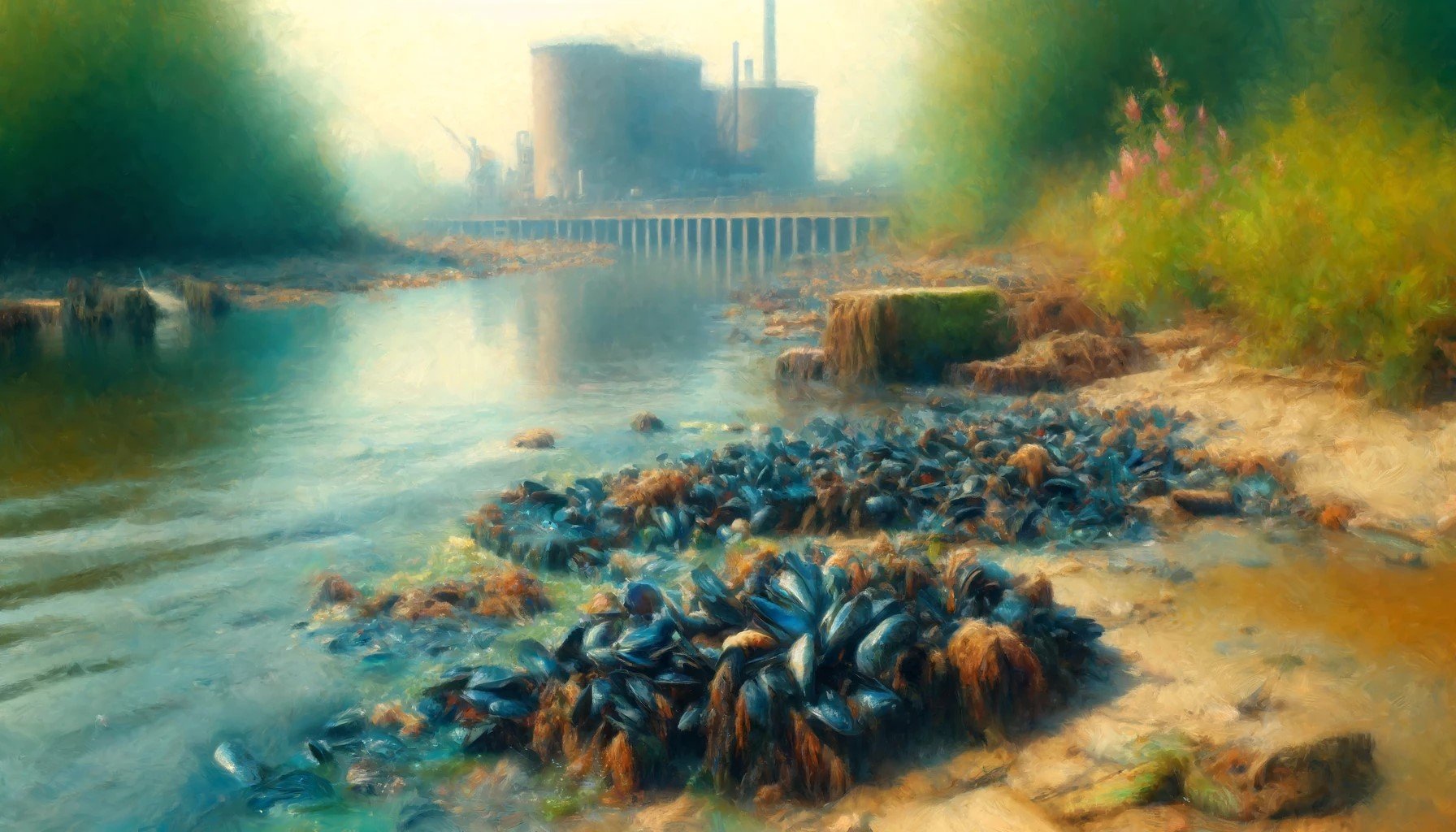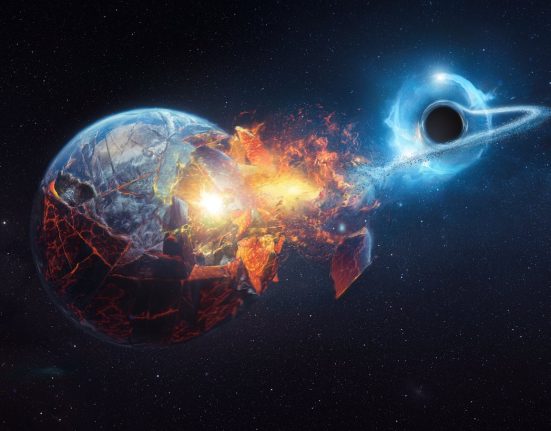The river spits
its secrets in the mud,
tracing of dark veins
memories of buried spills –
dark rifles nailed
with fetid tears.
Mussels cling
to the sediment,
their shells
engraved with scars
of our creation –
they drink
heavy water,
language tasting
metallic pasts
tied with bilge.
Down river
the current continues,
soft and radiant fingers
with invisible light –
filtering through
fragile skin
of everything
Within reach.
This poem is inspired by recent researchwhich has discovered that mussels found downstream of wastewater treatment plants contain radium.
Historically, managing wastewater produced by oil and gas extraction has been a major environmental challenge. This waste, often dumped into rivers, can contaminate the surrounding ecosystem with dangerous substances such as radium, a naturally occurring radioactive material. Radium can persist in riverbed sediments, posing a long-term threat to aquatic life. Of particular concern are benthic organisms such as freshwater mussels, which live at the bottom of bodies of water and are particularly susceptible to accumulating radium in their bodies over time. This accumulation poses serious health problems, not only for the mussels themselves, but potentially for the broader ecosystem and human populations that may depend on these water sources.
In response to this question, researchers have investigated the extent of radio contamination in the Allegheny River in Pennsylvania, near a waste treatment facility that has historically processed and discharged oil and gas wastewater. Their study focused on adult freshwater mussels of the species dilated eurynia, analyzing radium levels in the soft tissues and shells of mussels, as well as in river bed sediments. The findings were alarming: Radium levels were significantly higher near the discharge site compared to upstream areas. Furthermore, evidence suggested that mussels retained radium in their tissues up to several kilometers downstream from the discharge point. This study not only highlights the ability of radium to bioaccumulate in aquatic organisms, but also highlights the continued impact of inherited waste disposal practices on river ecosystems. The implications underscore the need for stricter controls and cleanup measures to protect aquatic life and, by extension, the health of the environment and the public.















Leave feedback about this